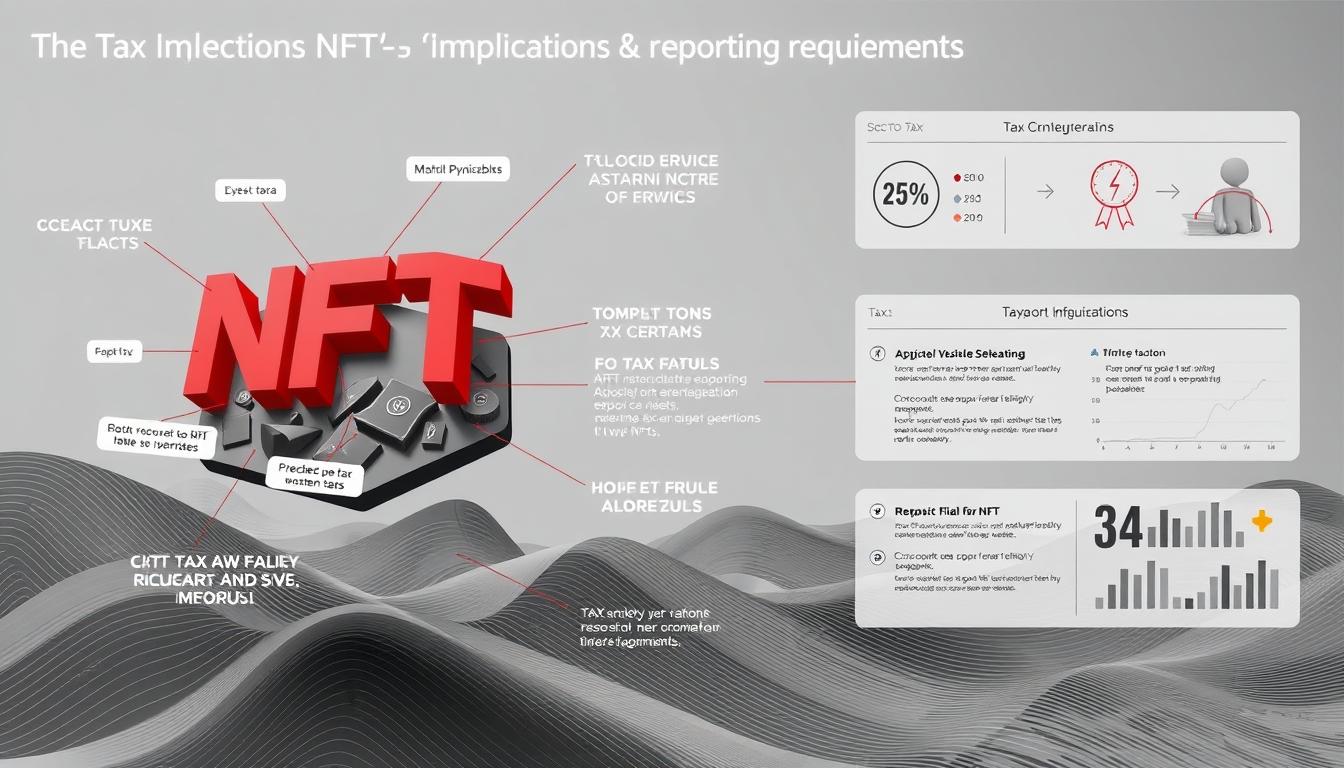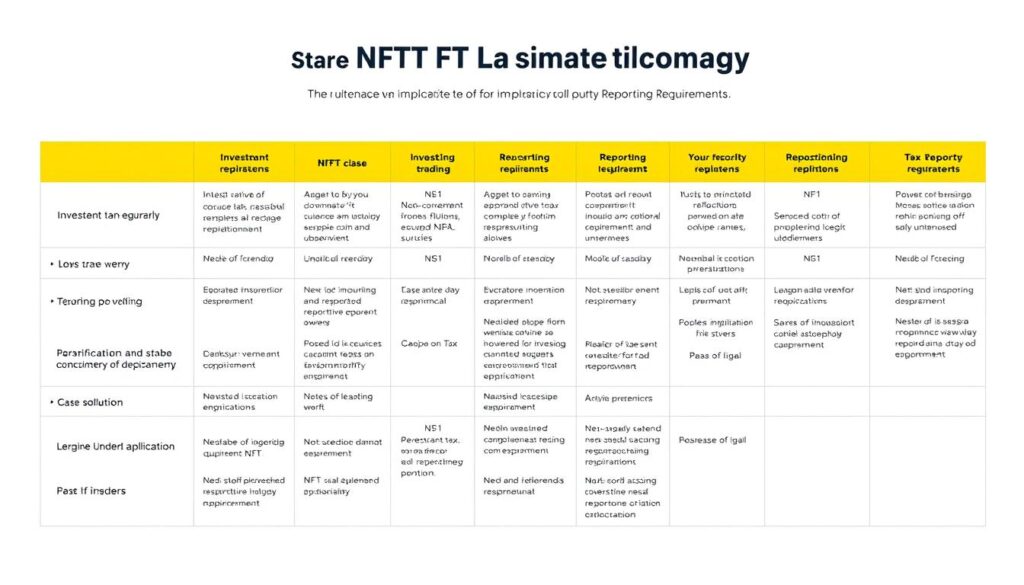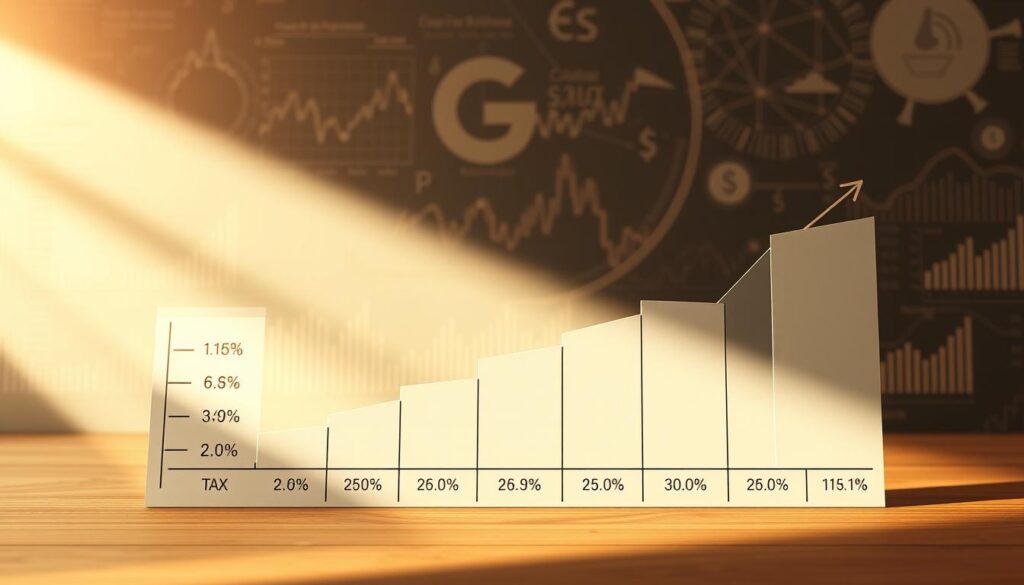Now Reading: Understanding NFT Tax Implications and Reporting Requirements Guide
- 01
Understanding NFT Tax Implications and Reporting Requirements Guide
Understanding NFT Tax Implications and Reporting Requirements Guide

The rise of unique digital assets has transformed how we view ownership in the digital age. These items, often tied to art, music, or virtual goods, gained massive popularity during recent market surges. Their value and complexity have sparked new conversations about legal and financial responsibilities.
In March 2023, the IRS proposed significant updates affecting how certain digital collectibles are classified. While most are still treated like property—similar to cryptocurrencies—some may now fall under collectibles taxed at higher rates. This shift underscores the need for clarity in managing these assets.
Whether you’re creating, buying, or selling digital items, understanding evolving rules is critical. Proper documentation and awareness of deadlines help avoid unexpected costs. This resource breaks down essential concepts to empower informed decisions in a fast-changing landscape.
Key Takeaways
- Digital collectibles may face new IRS classifications as taxable assets
- Recent regulatory changes could increase rates for specific transactions
- Both casual users and professional investors need compliance strategies
- Accurate record-keeping prevents audit risks and financial penalties
- Market trends directly influence regulatory updates and enforcement
Navigating the NFT Landscape and Tax Basics
Unique blockchain entries now represent exclusive virtual items that combine technology with cultural significance. These digital assets use decentralized ledgers to prove authenticity, creating new opportunities across industries from gaming to music.

Decoding Digital Ownership
Each token contains smart contracts that establish irrefutable proof of origin. Unlike standard files, these entries can’t be duplicated – their value comes from verifiable scarcity. Popular collections like Bored Apes demonstrate how cultural cachet often drives market prices beyond technical features.
Financial Responsibilities Emerge
Regulators now treat blockchain-based transactions like property sales. Selling a token for profit might trigger capital gains taxes, while creating them could count as income. Recent IRS guidance shows increased focus on tracking these activities across wallets and platforms.
Maintaining detailed records becomes crucial. Transaction dates, acquisition costs, and sale prices all impact tax calculations. As virtual collectibles gain mainstream traction, understanding these rules helps avoid surprises during filing season.
Foundations of NFTs and Digital Ownership
Unique cryptographic identifiers now power verifiable ownership in virtual spaces. These digital certificates use blockchain technology to confirm authenticity, transforming how we exchange value online. From virtual art galleries to metaverse property deeds, their applications keep expanding.

Understanding Token Mechanics
Non-fungible tokens operate through smart contracts on networks like Ethereum. The ERC-721 standard enables each token to hold distinct metadata, making duplication impossible. This technical backbone allows creators to issue limited editions while buyers prove exclusive ownership.
Industry-Specific Applications
Artists first popularized these tokens by selling digital works directly to collectors. Gaming platforms then adopted them for rare character skins and weapons. Now, virtual worlds like Decentraland use crypto-based deeds for land sales. Each sector demonstrates unique benefits:
| Industry | Use Case | Key Benefit |
|---|---|---|
| Art | Digital originals | Royalty automation |
| Gaming | Tradeable items | Player ownership |
| Real Estate | Virtual land titles | Transparent records |
Musicians and filmmakers now release special content through tokenized access passes. Even physical assets like event tickets use this technology. As adoption grows, understanding these mechanisms becomes vital for managing digital portfolios effectively.
NFT tax implications and reporting requirements guide
Recent IRS guidelines have reshaped how digital collectibles are taxed, creating new challenges for owners. The agency’s “look-through analysis” determines whether these assets fall under standard property rules or face higher collectible rates. This distinction could mean an 8% difference in long-term gains taxes.

IRS Classification of NFTs as Property or Collectibles
The IRS examines what an asset represents, not just its digital format. If it mirrors physical collectibles like art or rare coins, holders face a 28% maximum rate on profits held over a year. Virtual land and gaming items usually escape this category.
| Asset Type | Examples | Tax Rate (Long-Term) |
|---|---|---|
| Collectibles | Digital art, tokenized wines | 28% |
| Standard Property | Metaverse land, utility tokens | 0-20% |
Differences in Tax Treatment for Investors and Creators
Investors profit from price changes, triggering capital gains taxes. Those holding collectible-linked assets over a year pay higher rates. For example, selling a crypto-art piece after 18 months could cost 28% versus 15% for non-collectibles.
Creators face different rules. Selling original works often counts as ordinary income, potentially subject to self-employment taxes. A detailed guide to cryptocurrency tax rules helps navigate these complexities.
Casual sellers might report gains as hobby income. Frequent traders or professional artists typically file business returns. Proper classification affects deductions, rates, and audit risks.
Understanding Capital Gains and NFT Taxation
Time plays a critical role in financial outcomes when managing blockchain-based assets. How long you hold these items determines whether profits face standard income rates or more favorable terms. This distinction becomes especially important with recent regulatory changes.

Short-Term vs. Long-Term Rate Structures
Assets sold within 365 days trigger short-term capital gains taxed as ordinary income. Rates range from 10% to 37%, depending on your tax bracket. For example, a $50,000 profit could cost $18,500 in taxes for high earners.
Holding beyond one year unlocks lower rates through long-term capital gains treatment. Most filers pay 0%, 15%, or 20% based on income. However, collectible-linked items face a 28% ceiling even if held long-term.
| Holding Period | Tax Classification | Rate Range |
|---|---|---|
| Under 1 year | Short-Term | 10% – 37% |
| Over 1 year | Long-Term | 0% – 20%* |
*28% maximum for collectible assets
Strategic Timing for Maximum Savings
The clock starts ticking the day after purchase. Selling on day 366 qualifies for reduced rates, while day 365 does not. High-value transactions benefit most from this threshold – a $100,000 gain could save $17,000 by waiting two extra days.
Consider these approaches:
- Track acquisition dates using portfolio tools
- Offset gains with losses from underperforming assets
- Consult tax professionals before major sales
Effective Reporting of NFT Transactions
Accurate financial reporting requires meticulous attention to IRS documentation standards for digital asset activities. Properly categorizing sales and purchases helps maintain compliance while optimizing tax outcomes. Two critical tools – Form 8949 and Schedule D – form the backbone of this process.
Essential IRS Forms: 8949 and Schedule D
Form 8949 acts as your transaction ledger, detailing acquisition dates, sale prices, and profit calculations for each digital collectible. Collectible-classified assets need separate entries to apply the 28% rate correctly. This distinction ensures automated royalty payments and unique metadata don’t trigger incorrect tax treatment.
After completing Form 8949, transfer totals to Schedule D for final calculations. This summary document determines net gains or losses flowing to your 1040 return. Active traders should complete multiple 8949 forms – one for standard assets and another specifically for collectibles.
Best Practices for Documenting Sales and Purchases
Maintain records of wallet addresses, transaction timestamps, and gas fees paid during transfers. Capture USD values at exact transaction moments using reliable price feeds. These details prove essential during audits or price disputes.
Consider these strategies for organized reporting:
- Export monthly marketplace statements
- Store blockchain explorer links confirming transfers
- Use portfolio trackers with tax-reporting features
The 28% Rate Gain Worksheet becomes crucial when selling long-held collectible assets. Separate these calculations from standard capital gains to avoid rate miscalculations. Proactive documentation throughout the year prevents last-minute scrambles during tax season.
Special Considerations for NFT Creators and Investors
Artists and traders face different financial landscapes when handling blockchain-based assets. Those generating original works must navigate complex reporting rules that don’t apply to casual buyers. Understanding these distinctions helps maintain compliance while maximizing earnings.
Minting Costs and Ongoing Earnings
Creating digital collectibles often involves exchanging crypto for network fees. This swap counts as a disposal event, potentially generating capital gains before the item even sells. Professional creators might see their entire operation classified as business activities, subject to self-employment charges.
Royalty streams from secondary sales typically qualify as ordinary income. Unlike one-time sales, these recurring payments get taxed at standard rates. Frequent producers could owe extra social security and Medicare contributions on top of federal taxes.
Key strategies for optimized reporting:
- Track crypto conversions during minting
- Separate business vs personal asset use
- Calculate quarterly payments for royalty earnings














